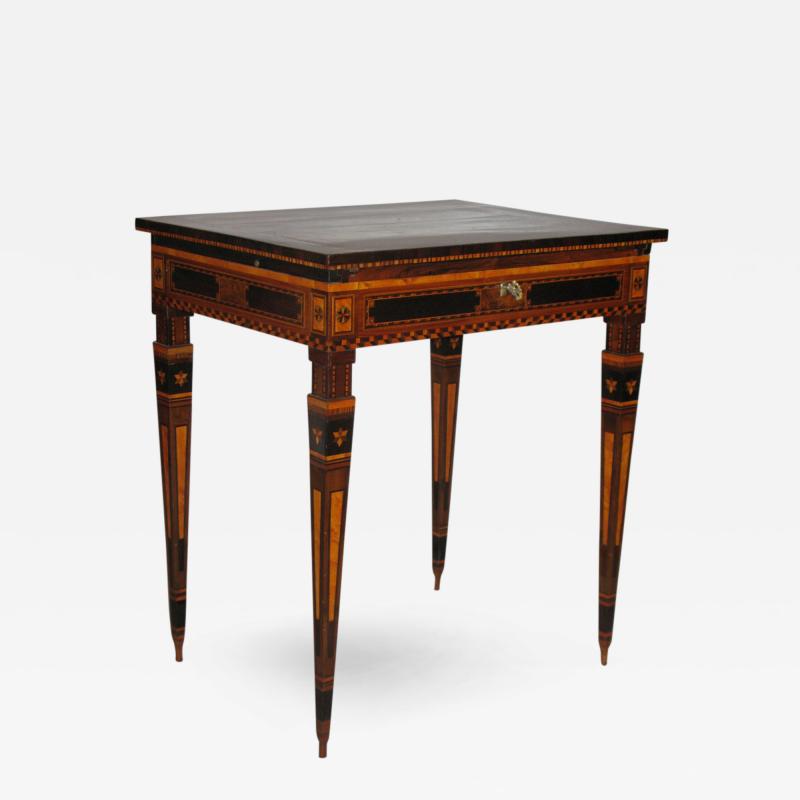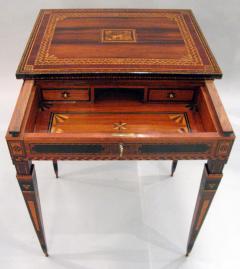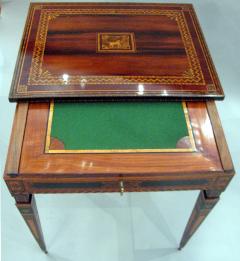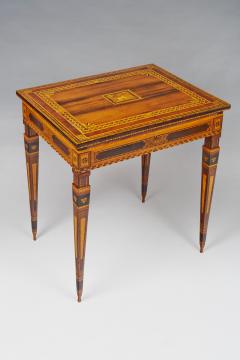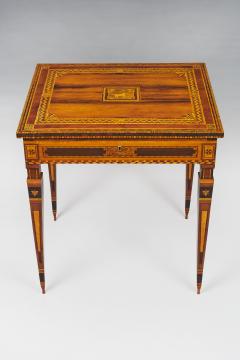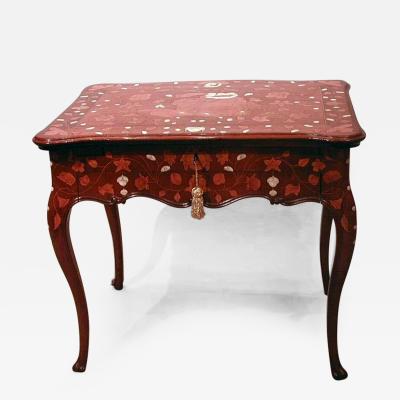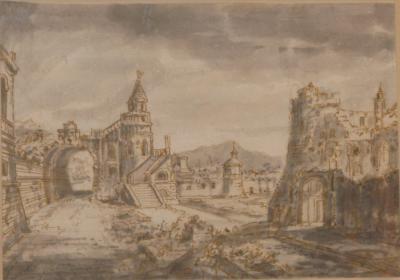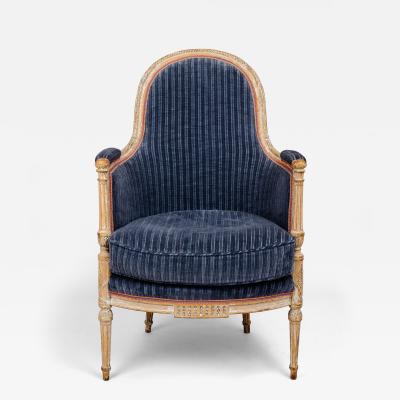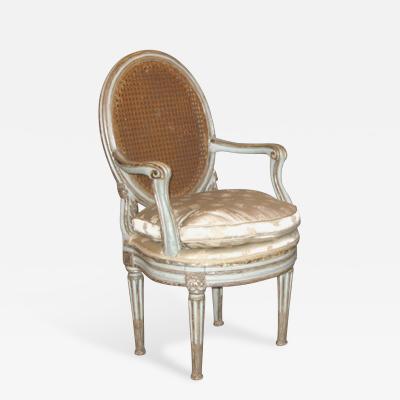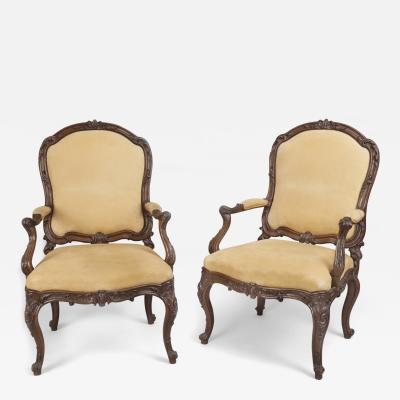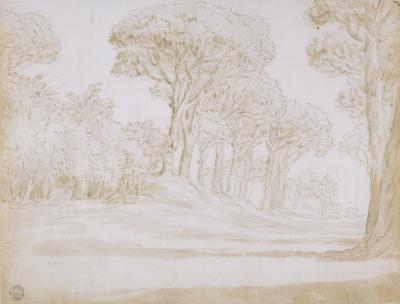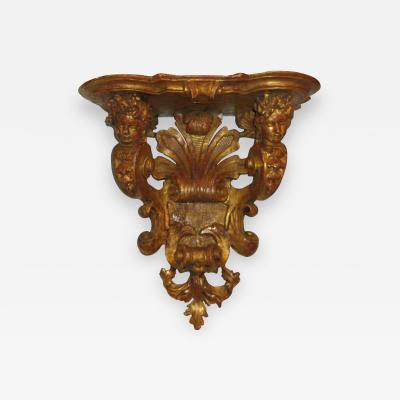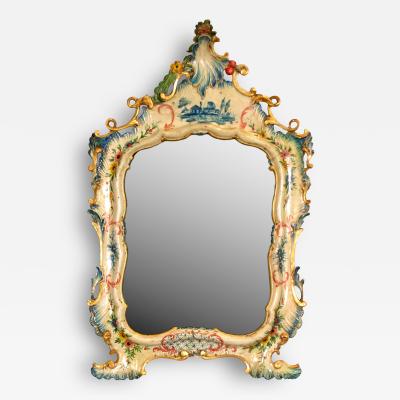Listings / Furniture / Tables / Game Tables
A Small Florentine Game Desk with Mechanical Features
-
Description
Francesco Spighi was one of the best known 'ébeniste' of his time. He was mentioned in the last number of the Magazzino di Mobilia of November 1796, in a description of a small commode, or 'comodino, all'etrusca intarsiato,’ as too celebrated in all of Europe to have need of 'elogio' (praise)." His fame did not even fade in the nineteenth century; he was admired by Finochietti for his mastery of intarsia. During his life, Spighi was active for the court at Palazzo Pitti.
He was known as the interpreter of the Neoclassic style, then called "gusto all'etrusca," (in the Etruscan taste). He was known to be able to unite the particularly refined technique of geometric intarsia with a very real and personal talent for the mechanics of wood work, such as the workings of multiple and slide-able writing surfaces characterized in the Florentine desks of the period.
In Vol. I (p. 88-89, fig. 66) by Simone Chiarugi in Bottegne de Mobilieri in Toscana 1780-1900 (Florence 1994), a similar desk to ours featuring an instarsia animal centered on the top. This table is also similar to those that decorated a pair of tables sold at Sothebys, 19 June 2002, lot #457 and published by Enrico Colle in Il Moblile Neoclassico in Italy, Milan 2005 (p. 194) with a comment that it was purchased by the ébeniste Angiolo Ballastresi in 1792.
The sliding top is centered with a rectangle (within a frame) which reveals two tirettes (small slides) and a compartment when moved. The legs are of reversed obelisk shape. When the lower left corner under the top is pressed, the top springs back to reveal a writing surface. This surface has inlay featuring fan design around the felt center. When this is pulled forward, a good working surface is available. The surface of the inner section has a star and fan design. The small drawers on either side of the back of the interior, which, when pulled open and removed, reveal a wooden base which can also be removed to gain access to a drawer with a parallel well for secret valuables. The escutcheon on the front is original, and seemingly points to a drawer which instead does not exist. -
More Information
Origin: Italy Period: 18th Century Materials: Veneered with palissander, rosewood and tinted woods. The top features a prancing horse inlay with geometric motif around the border and fan design; each corner with rosettes with green background. Condition: Excellent. Creation Date: Late 18th century Styles / Movements: Neoclassical Dealer Reference #: DSV 18-33 Incollect Reference #: 178076 -
Dimensions
W. 25.5 in; H. 28.75 in; D. 20 in; W. 64.77 cm; H. 73.03 cm; D. 50.8 cm;
Message from Seller:
L' Antiquaire & The Connoisseur, Inc. specializes in European works of art, antiques, and paintings, with a rich history dating back to 1935. For more information, contact us at 212.517.9176 or info@lantiquaire.us.















